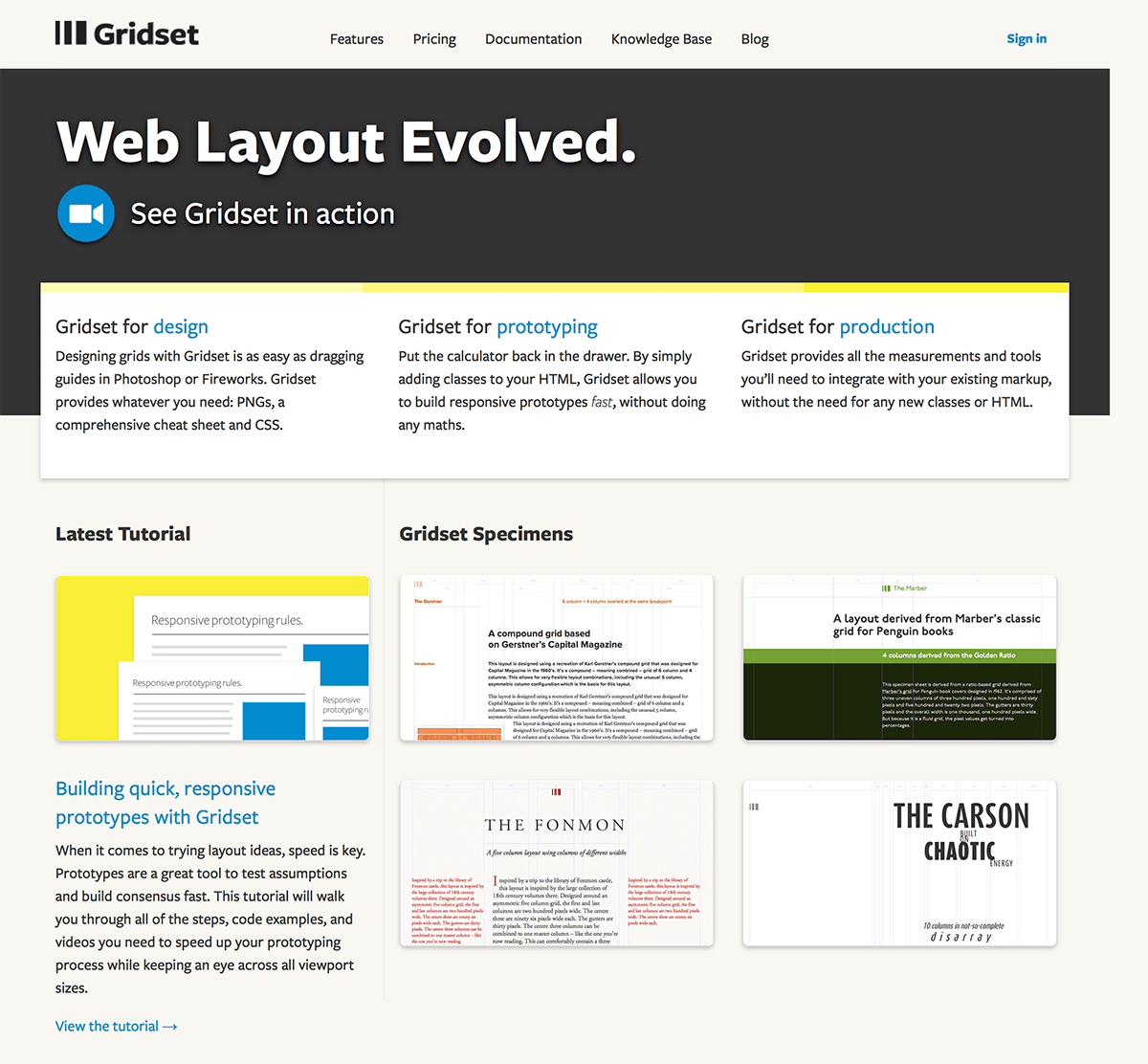Goodbye Gridset
Originally developed by Mark Boulton Design—before their acquisition by Monotype—Gridset has been my go-to tool for designing grids since it started. In fact, it taught me more about grid design than just about anything else. Sadly, Gridset is being decommissioned this week, so I downloaded the default sets of grids, plus a few of my own, and have shared them on Github.

One of the most important aspects of Gridset was that it taught people that there was more to using a grid than simply aligning content to one of either twelve or sixteen columns. To be more precise, it showed that grids should be designed, not simply plucked off the shelf from any number of identical templates. In 2013, Nathan Ford, who developed Gridset, once gave an excellent talk on “Don’t just choose a grid. Design it!” Sadly there are no notes from that talk still available (the website 404s) but I did extract one quote when I linked to it five years ago. He said:
You should design a grid based on your content’s constraints, not design your content based on a grid’s constraints.
That quote has stuck with me ever since. It’s perhaps the most important advice I have taken notice of and I repeat it to every student I teach.
Frankly, I’m incredulous that no one has (yet) developed a tool for grid design as good as Gridset. Not Affinity, not Bohemian Coding (who make Sketch), and certainly not Adobe. I suppose the reason is that no one making software really understands how important designing an original grid is to making a design which stands apart from everything else. That makes me a little sad.
Tonight I downloaded all of Gridset’s standard templates which are themselves incredible teaching aides for grid design. I also downloaded some of my own favourite grids which I’ve used on projects for the past few years. I shared them on Github so that I, and you, can carry on using them long after Gridset has gone.